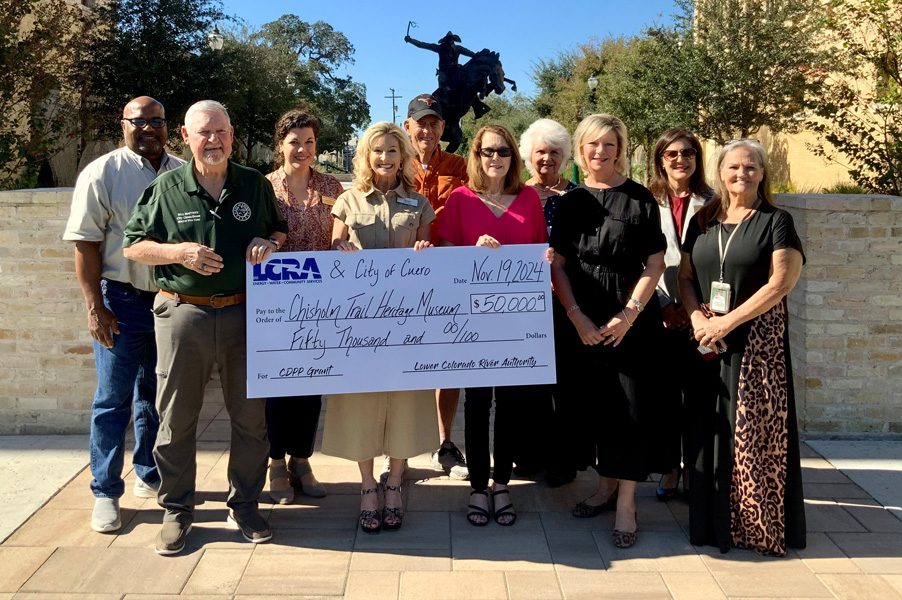LCRA, City of Cuero award $50,000 grant to expand Chisholm Trail Heritage Museum
Project will renovate exterior of two nearby historic buildings
NOV. 20, 2024

The Community Development Partnership Program grant, along with a matching contribution of $422,000 from the museum, will pay to renovate the facades of the two buildings, add a new canopy and lighting, and create a new landscape feature.
Robert Oliver, museum board chair, said the work will help the museum expand its cultural and educational offerings for South Central Texas and continue its legacy of historic preservation. When the expansion project is complete, the renovated space will provide 14,000 square feet of exhibit and community space.
The work is part of a larger project to renovate the museum area and develop new exhibit space that will broaden the museum’s cultural outreach and programming, including adding three new exhibit galleries: Paying Tribute to Native American Plains Indians, Expressions in Western Art and the Texas Room.
“These new exhibits will be a resource for school districts throughout South Central Texas, allowing students to experience high-caliber educational material at a local level without needing to travel to larger cities,” Oliver said. “In the last two years alone, our museum’s two educators provided on-site tours and educational programs to more than 3,000 young people, and now we will have the ability to expand our content and capacity for offering youth education.”
LCRA General Manager Phil Wilson said the new exhibit space will benefit both area school students and lifelong learners.
“The mission of the Chisholm Trail Heritage Museum is to preserve the rich ranching and Western heritage of this area,” Wilson said. “It’s important to honor and learn about those who came before us and made such a huge impact on the region.”
Wilson said the museum plays a key role in the region by providing historical exhibits and attracting visitors who often patronize other businesses in the area.
“The museum beautifully memorializes the history of the Guadalupe River Valley, and LCRA is honored to play a role in supporting its expansion,” Wilson said.
Oliver said restoring the two buildings also will help in the museum’s efforts to revitalize Cuero’s historic district. The Trautwein building was built about 1894 and the Cook & Day Motor Co. was built about 1921. Both were given to the museum in 2020.
“In addition to its cultural impact, the project contributes to the museum’s legacy of historic preservation in Cuero’s National Register Downtown Commercial Historic District,” Oliver said. “With the expansion, the museum aims to attract heritage tourism, foster new business opportunities and create jobs that will support local economic development.”
Through working with LCRA, the City of Cuero and other local organizations, the museum will enhance the district by adding new sidewalks, LED historic lamp poles, updated storefront glass with UV protection and drought-tolerant landscaping.
The community grant is one of 37 grants awarded recently through LCRA’s Community Development Partnership Program, which helps volunteer fire departments, local governments, emergency responders and nonprofit organizations fund eligible capital improvement projects in LCRA’s wholesale electric, water and transmission service areas. The program is part of LCRA’s effort to give back to the communities it serves. The City of Cuero is one of LCRA’s wholesale electric customers and is a partner in the grant program.
About LCRA
The Lower Colorado River Authority serves customers and communities throughout Texas by managing the lower Colorado River; generating and transmitting electric power; providing a clean, reliable water supply; and offering outdoor adventures at more than 40 parks along the Colorado River from the Texas Hill Country to the Gulf Coast. LCRA and its employees are committed to fulfilling our mission to enhance the quality of life of the Texans we serve through water stewardship, energy and community service. LCRA was created by the Texas Legislature in 1934 and receives no state appropriations.


Social Media